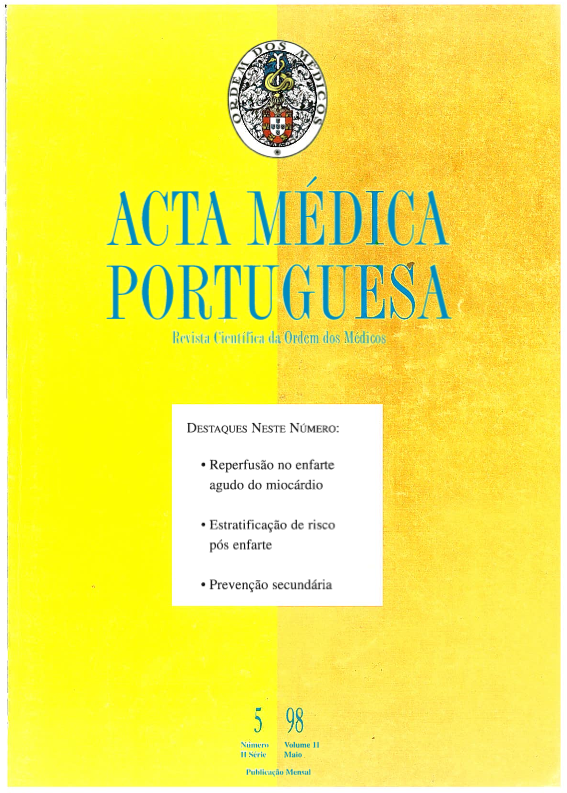Estratificação de risco pós-enfarte do miocárdio.
DOI:
https://doi.org/10.20344/amp.2255Resumo
The aim of performing diagnostic tests in patients with myocardial infarction before hospital discharge is to identify those with a high risk of recurrence or sudden death. It is convenient to perform these tests before discharge because the risk is higher in the next two months. The assessment of ventricular function is fundamental since it is the best predictor of post-infarction survival. There are many patients in which the combination of clinical, electrocardiographic and enzymatic data present a strong argument to assume that the loss of contractile myocardium was relatively small. In the remaining patients, the use of non invasive techniques, or even contrast ventriculography, is indispensable. The choice of method, be it exercise electrocardiography, stress echocardiography, rest or stress scintigraphy and coronary ventriculography, depends greatly on the resources available and the degree of reliability offered by the team performing the method. The sub-maximal exercise test performed before hospital discharge in patients with an uncomplicated infarction has already an undisputed role in determining prognosis. Stress echocardiography and stress or exercise thallium scintigraphy have a greater predictive value than the sub-maximum stress test. Their greatest advantage probably lies in the possibility of identifying the patients with a low risk of future cardiac events. In many centers, coronary angiography and ventriculography are preferred with out "wasting" time with non invasive methods, which, although more economical, give only indirect information. The existence of complex ventricular arrhythmias is an independent prognostic factor concerning mortality. Ambulatory electrocardiography and electrophysiological studies are the methods of choice for their detection, the latter having become routine as their value has increased due to the availability of implantable automatic defibrillators.Downloads
Downloads
Como Citar
Edição
Secção
Licença
Todos os artigos publicados na AMP são de acesso aberto e cumprem os requisitos das agências de financiamento ou instituições académicas. Relativamente à utilização por terceiros a AMP rege-se pelos termos da licença Creative Commons ‘Atribuição – Uso Não-Comercial – (CC-BY-NC)’.
É da responsabilidade do autor obter permissão para reproduzir figuras, tabelas, etc., de outras publicações. Após a aceitação de um artigo, os autores serão convidados a preencher uma “Declaração de Responsabilidade Autoral e Partilha de Direitos de Autor “(http://www.actamedicaportuguesa.com/info/AMP-NormasPublicacao.pdf) e a “Declaração de Potenciais Conflitos de Interesse” (http://www.icmje.org/conflicts-of-interest) do ICMJE. Será enviado um e-mail ao autor correspondente, confirmando a receção do manuscrito.
Após a publicação, os autores ficam autorizados a disponibilizar os seus artigos em repositórios das suas instituições de origem, desde que mencionem sempre onde foram publicados e de acordo com a licença Creative Commons









